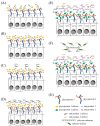Impact of Early Weaning on Development of the Swine Gut Microbiome
- PMID: 37512925
- PMCID: PMC10385335
- DOI: 10.3390/microorganisms11071753
Impact of Early Weaning on Development of the Swine Gut Microbiome
Abstract
Considering that pigs are naturally weaned between 12 and 18 weeks of age, the common practice in the modern swine industry of weaning as early as between two and four weeks of age increases challenges during this transition period. Indeed, young pigs with an immature gut are suddenly separated from the sow, switched from milk to a diet consisting of only solid ingredients, and subjected to a new social hierarchy from mixing multiple litters. From the perspective of host gut development, weaning under these conditions causes a regression in histological structure as well as in digestive and barrier functions. While the gut is the main center of immunity in mature animals, the underdeveloped gut of early weaned pigs has yet to contribute to this function until seven weeks of age. The gut microbiota or microbiome, an essential contributor to the health and nutrition of their animal host, undergoes dramatic alterations during this transition, and this descriptive review aims to present a microbial ecology-based perspective on these events. Indeed, as gut microbial communities are dependent on cross-feeding relationships, the change in substrate availability triggers a cascade of succession events until a stable composition is reached. During this process, the gut microbiota is unstable and prone to dysbiosis, which can devolve into a diseased state. One potential strategy to accelerate maturation of the gut microbiome would be to identify microbial species that are critical to mature swine gut microbiomes, and develop strategies to facilitate their establishment in early post-weaning microbial communities.
Keywords: gut development; microbiome; swine; weaning.
Conflict of interest statement
The authors declare no conflict of interest.
Figures


References
-
- Cook H., Schulz L. The United States Pork Industry: Current Structure and Economic Importance. National Pork Producers Council; Urbandale, IA, USA: 2022.
-
- Collins C.L., Pluske J.R., Morrison R.S., McDonald T.N., Smits R.J., Henman D.J., Stensland I., Dunshea F.R. Post-weaning and whole-of-life performance of pigs is determined by live weight at weaning and the complexity of the diet fed after weaning. Anim. Nutr. 2017;3:372–379. doi: 10.1016/j.aninu.2017.01.001. - DOI - PMC - PubMed
Publication types
Grants and funding
LinkOut - more resources
Full Text Sources

